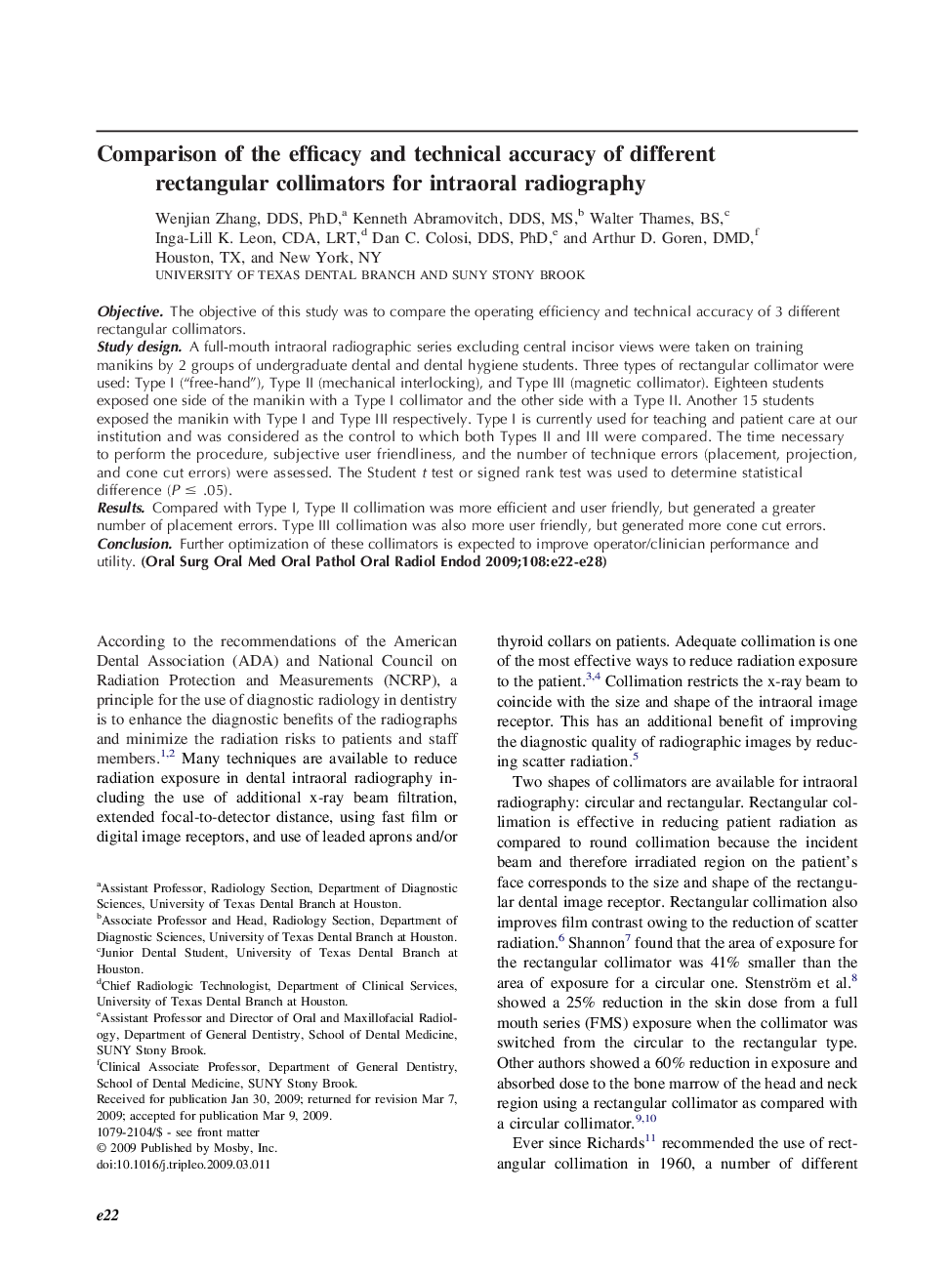| Article ID | Journal | Published Year | Pages | File Type |
|---|---|---|---|---|
| 3168196 | Oral Surgery, Oral Medicine, Oral Pathology, Oral Radiology, and Endodontology | 2009 | 7 Pages |
ObjectiveThe objective of this study was to compare the operating efficiency and technical accuracy of 3 different rectangular collimators.Study designA full-mouth intraoral radiographic series excluding central incisor views were taken on training manikins by 2 groups of undergraduate dental and dental hygiene students. Three types of rectangular collimator were used: Type I (“free-hand”), Type II (mechanical interlocking), and Type III (magnetic collimator). Eighteen students exposed one side of the manikin with a Type I collimator and the other side with a Type II. Another 15 students exposed the manikin with Type I and Type III respectively. Type I is currently used for teaching and patient care at our institution and was considered as the control to which both Types II and III were compared. The time necessary to perform the procedure, subjective user friendliness, and the number of technique errors (placement, projection, and cone cut errors) were assessed. The Student t test or signed rank test was used to determine statistical difference (P ≤ .05).ResultsCompared with Type I, Type II collimation was more efficient and user friendly, but generated a greater number of placement errors. Type III collimation was also more user friendly, but generated more cone cut errors.ConclusionFurther optimization of these collimators is expected to improve operator/clinician performance and utility.
